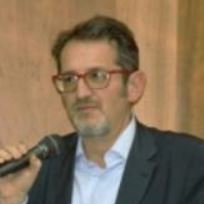YOCOCU2020 Hands on Heritage: Experiencing, Conservation, Mastering Management
A special issue of Heritage (ISSN 2571-9408).
Deadline for manuscript submissions: closed (31 July 2021) | Viewed by 33870
Special Issue Editors
Interests: conservation of cultural heritage; deterioration phenomena and new methods for the conservation of inorganic materials; new nano systems for the cultural heritage conservation.
Interests: heritage science; remote sensing in archaeology; architectural conservation; archaeological science; humanities
Special Issues, Collections and Topics in MDPI journals
Interests: conservation of cultural heritage; non-destructive techniques for diagnostics on cultural heritage; microclimatic monitoring; preventive conservation
Special Issues, Collections and Topics in MDPI journals
Special Issue Information
Dear Colleagues,
This Special Issue of Heritage encourages the submission of contributions presented at the 7th YOCOCU (Youth in Conservation and Cultural Heritage) Conference in Tbilisi, on 19th–23rd May 2020: "Hands on Heritage: Experiencing, Conservation, Mastering Management". This edition is devoted to experiences in learning and working on real-life scenarios in the realm of the conservation and management of cultural heritage. YOCOCU meetings are aimed at transmitting and disseminating knowledge and experiences in this broad and complex realm. In Tbilisi Georgian, Caucasian and International professionals, researchers and students will be able to realize and to attend sessions set as "short-workshops", where all attendees will update their knowledge in the conservation of cultural heritage or the management of site museums, world heritage sites, archaeological research in monumental heritage.
Therefore, research articles addressing the following (not exhaustive) list of topics are welcomed:
- Archaeological heritage between conservation and management
- New strategies in conservation and valorization of archaeological sites and buildings
- Archaeological research and cultural landscape
- Architectural restoration and conservation: approaches and case studies
- Public archaeology
- Remote sensing for archaeology and cultural heritage management
- Natural risk assessment for the protection of cultural heritage and landscape
- Remote and in-situ sensing technologies for the conservation and interpretation of monuments
Dr. Nicola Masini
Dr. Fernanda Prestileo
Guest Editors
Manuscript Submission Information
Manuscripts should be submitted online at www.mdpi.com by registering and logging in to this website. Once you are registered, click here to go to the submission form. Manuscripts can be submitted until the deadline. All submissions that pass pre-check are peer-reviewed. Accepted papers will be published continuously in the journal (as soon as accepted) and will be listed together on the special issue website. Research articles, review articles as well as short communications are invited. For planned papers, a title and short abstract (about 100 words) can be sent to the Editorial Office for announcement on this website.
Submitted manuscripts should not have been published previously, nor be under consideration for publication elsewhere (except conference proceedings papers). All manuscripts are thoroughly refereed through a single-blind peer-review process. A guide for authors and other relevant information for submission of manuscripts is available on the Instructions for Authors page. Heritage is an international peer-reviewed open access monthly journal published by MDPI.
Please visit the Instructions for Authors page before submitting a manuscript. The Article Processing Charge (APC) for publication in this open access journal is 1600 CHF (Swiss Francs). Submitted papers should be well formatted and use good English. Authors may use MDPI's English editing service prior to publication or during author revisions.







